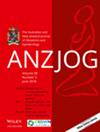Does abdominal protrusion in pregnant women affect abdominal injury severity in motor vehicle collisions? A nationwide database study
Abstract
Aims
Some pregnant women avoid vehicle driving owing to the risk of contact between their protruding abdomen and steering wheel. This study was performed to determine whether abdominal protrusion in late-term pregnant car users affects the occurrence and severity of abdominal injuries in motor vehicle collisions using a national crash database.
Methods
The National Automotive Sampling System/Crashworthiness Data System was used to analyse maternal background, collision characteristics, outcome and Abbreviated Injury Scale (AIS) scores for the body regions of all persons involved in the collision.
Results
Comparison of pregnant and non-pregnant women in the driver's seat showed no significant differences in the rate of AIS scores of ≥2 (2+) for abdominal injuries and female outcomes. Comparison of use of the driver's seat and front passenger's seat by pregnant women showed no significant difference in rate of AIS 2+ injuries or in maternal and fetal outcomes. Comparison of pregnant women with a gestational age of ≤27 and >27 weeks in the driver's seat showed no significant differences in rate of AIS 2+ injuries or in maternal and fetal outcomes.
Conclusions
Based on the data from relatively low-speed frontal collisions, obstetrician/gynaecologists should advise pregnant women that they do not need to change their preferred car seat from the driver's seat to another seat because of fear of contact between their protruding abdomen and the vehicle interior.

 求助内容:
求助内容: 应助结果提醒方式:
应助结果提醒方式:


